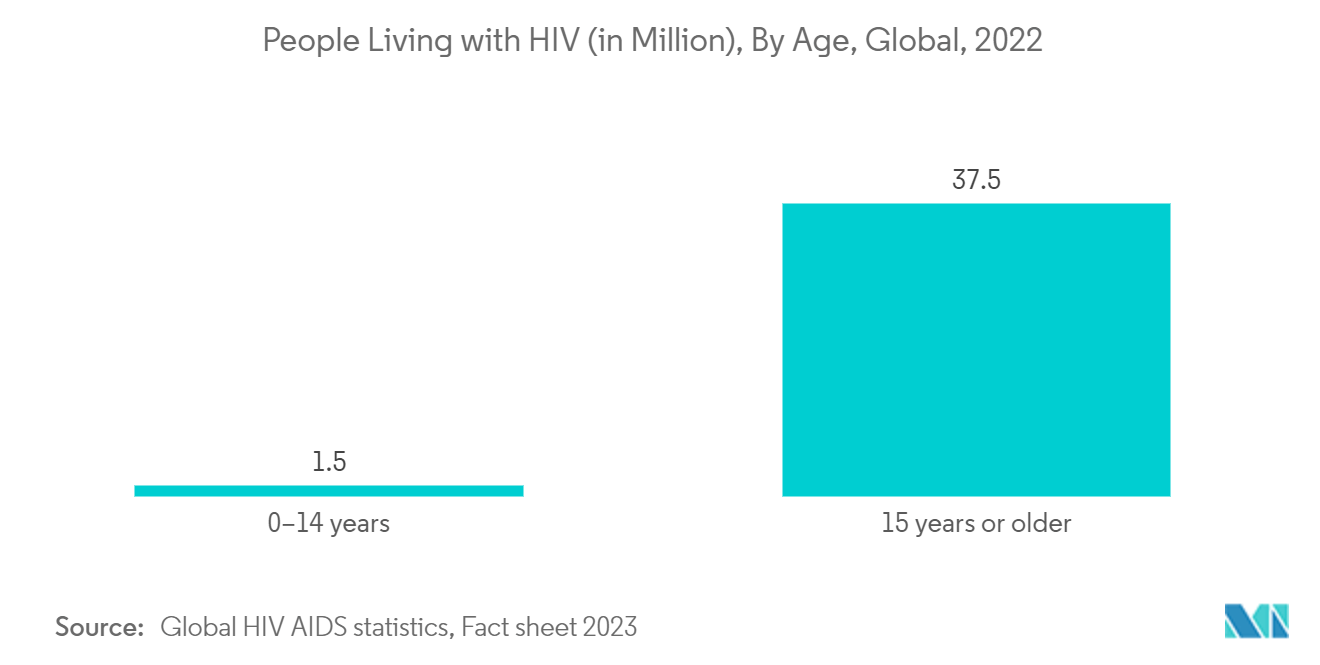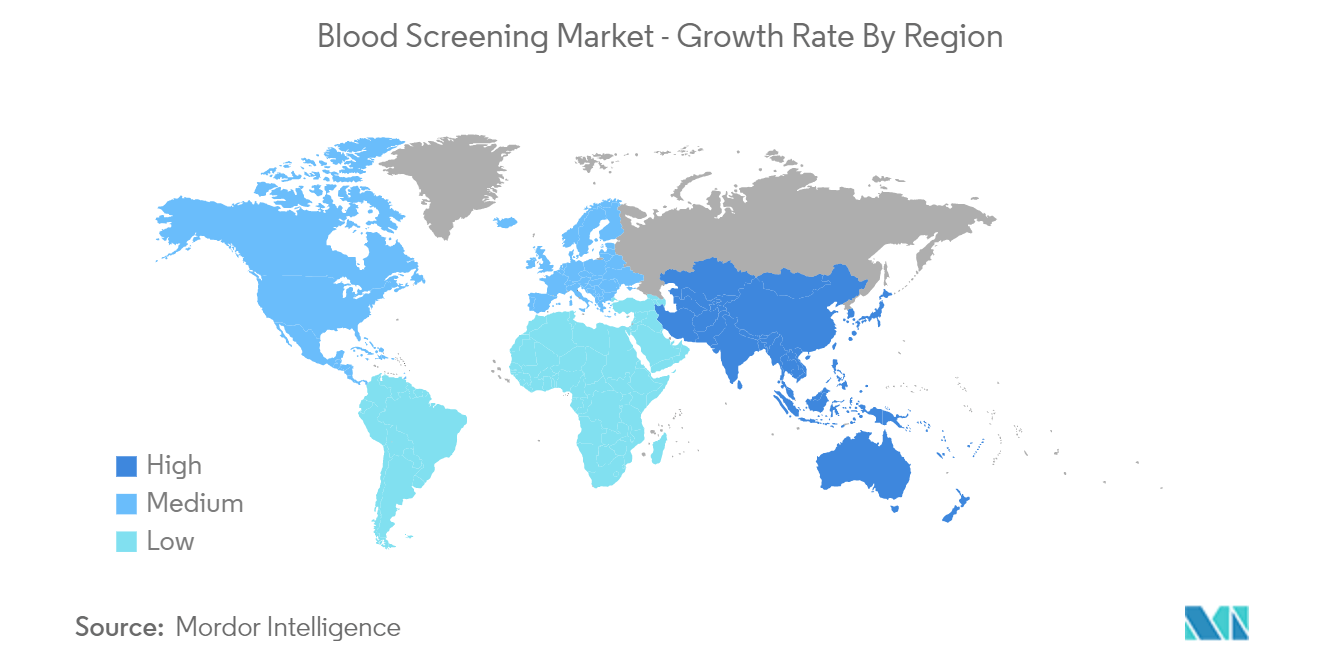Market Trends of Blood Screening Industry
Reagent Segment is Expected to Hold Significant Market Share Over the Forecast Period
The reagent segment of the market studied includes chemical, biological, or immunological components, solutions, or preparations intended by the manufacturer to be used during the blood screening process. COVID-19 was expected to significantly aid in the growth of the studied segment, owing to the high requirement of reagents to meet the increased global diagnostic demand for the screening of COVID-19 infection.
Additionally, with the increasing burden of infectious diseases worldwide, the demand for blood screening rises, increasing the demand for reagents used in the various testing platforms. For instance, as per the Global Tuberculosis Report 2022, published by the World Health Organisation, approximately 10.6 million people worldwide suffered from tuberculosis (TB) all over the world in 2021, as compared to 10.1 million in the previous year. Thus, a rise in demand for reagents is expected due to an expected rise in infectious diseases.
Several market players are developing and distributing reagents for blood screening globally. For instance, in March 2022, Mylab planned to expand into the lab testing equipment and reagents market. Also, the growing number of product launches is expected to drive the market. For instance, in July 2021, Ortho Clinical Diagnostics launched its VITROS Immunodiagnostic Products IL-6 Reagent Pack, the latest addition to Ortho's VITROS Critical Care blood screening menu.
Therefore, due to the factors mentioned above, the reagent segment in the blood screening market is expected to grow over the forecast period of the study.

North America Holds a Significant Share in the Market and Expected to do Same during the Forecast Period
The growth of the North American blood screening market can be attributed to rising healthcare spending, rising infectious disease prevalence, and the highly developed healthcare systems in the United States and Canada.
The increasing blood donation and blood transfusion rates are expected to boost the market over the forecast period. As per the American Red Cross, an estimated 36,000 units of red blood cells are required daily, and nearly 7,000 units of platelets and approximately 10,000 units of plasma are needed daily in the United States. Over 21 million blood components are transfused each year in the United States. The high demand for blood supply in the United States is expected to contribute to the market's growth over the forecast period.
With the increasing burden of infectious diseases worldwide, the market is expected to project growth over the forecast period. For instance, in October 2022, the US Department of Health & Human Services, supported by the Minority HIV/AIDS Fund, stated that approximately 1.2 million people in the United States suffer from HIV, and about 13% don't know it and need testing. Thus, with the increasing prevalence of infectious diseases, the demand for blood screening is expected to rise, boosting market growth.
In addition, there is also a considerable influx of product launches that boost the market growth. For instance, in June 2021, Grail launched the Galleri blood test, a single blood test capable of detecting the presence of multiple cancers. Now available by prescription in the US, the test is meant to screen people with an already elevated risk for cancer, such as adults over 50.
Thus, the market segment is expected to grow over the forecast period due to the abovementioned factors.

